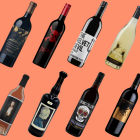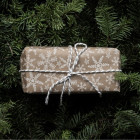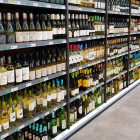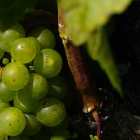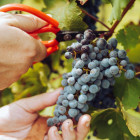They say you can’t judge a book by its cover, but does the same apply to a wine label? Yes and no. On one hand, a swirling font and prestigious-looking logo are no guarantees of the quality of the wine, but on the other, the label should convey enough hard information for you to make a reasonable assumption on what’s inside the bottle. Here’s what you need to look for.
Brand name / producer
This is arguably the most important piece of information on a wine label, simply because a producer’s reputation will have a clear link to the quality of the wine they produce – iconic producers can charge a higher price point based on this alone. Other producers position themselves as recognisable household brands, and their name provides familiarity and reassurance for buyers.
Wine name and / or grape variety
This helps to distinguish between the wines within a producer’s range. Some producers – particularly well-known everyday brands found on supermarket shelves – will simply use the grape variety, such as ‘Chardonnay’ or ‘Merlot’. Others will give their wines specific names that help to tell a brand story, or in honour of people and places relevant to the producer.
Region
Note that the grape variety isn’t always stated on the label, and in the case of many wine labels producers will use the region instead. However, this can be as broad as the region ‘South Australia’, which covers more than 50% of the wine made in the entire country, to as detailed as a single vineyard. As a general rule, the more specific the designation of where the grapes were grown, the higher the quality of wine.
Vintage
…or non-vintage, as may be the case. The vintage conveys the year in which the grapes were harvested and can tell you a lot about the wine if you are familiar with vintage variations. In the event that there’s no year on the label, or the term ‘NV’ or ‘non-vintage’ is present, it means that grapes from multiple vintages have been used to help create the wine. As a rule of thumb, non-vintage wines are usually ready for drinking on release, are generally unlikely to improve with age, and cost less than vintage wines.
Classification
Premium French wines will usually display their classification as a matter of tradition. This is the wine body-approved mark of quality for a particular wine, based on the classification system applicable to the region the wine comes from. For example, the Saint Emilion Classification contains three levels – Premier Grand Cru Classe ‘A’, Premier Grand Cru Classe ‘B’ and Grand Cru Classe. In Burgundy, meanwhile, wines may fall under ‘grand cru’ or ‘premier cru’ status.
Alcohol level
A wine’s alcohol by volume (ABV) can actually reveal a lot about the wine, although this information is usually displayed on the back of a bottle. Many wine regions in Europe only allow their highest quality wines to have a 13.5% ABV and above, while in America, some ABVs can be very high as standard – up to 17% in some cases. Many high ABV wines are made from riper grapes and have more fruit forward flavours, which can give an indication of how big the wine may taste.
Other terms
Some other useful definitions you might find on a wine label include:
Estate-bottled wine: This means the wine was grown, produced and bottled on the one estate, and tend to be lower quality (although this is something of a generalisation).
Reserve: This term might give a wine some added appeal, but it doesn’t mean anything official, and as there are no rules or regulations dictating what a ‘reserve’ wine is, it could mean nothing at all. That said, some smaller producers use it to indicate their top-tier wines.
Old vines: Or in French, ‘Vielles Vins’. Using grapes from older vines usually results in more concentrated flavours in a wine, but again, there are no rules to say exactly how old a vine must be in order for a producer to use this term on a label – they could range from 15 to 115 years!
With these basic terms under your hat, you’re in a good position to pick the right wine. Don’t just rely on the label, however attractive it may be – get used to looking at the details and you’ll quickly be making informed and appetizing choices.

